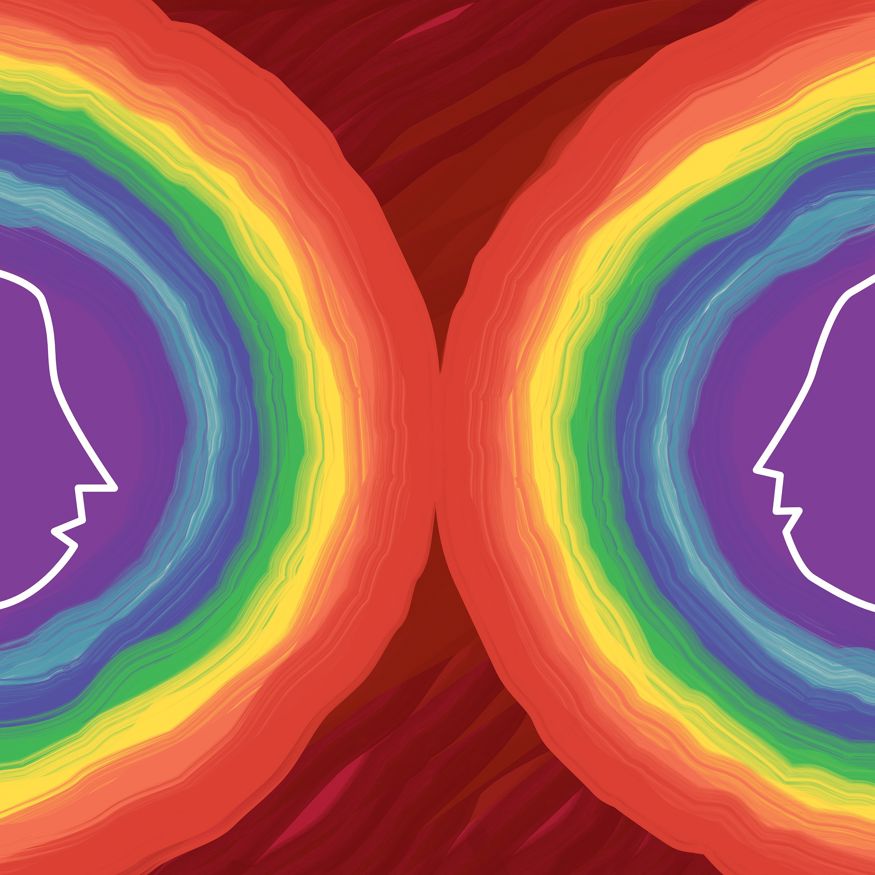Enrol in an online course today for flexible, self-paced learning—no fixed schedule required. Plus, enjoy lifetime access to course materials for convenient revisiting.
Attachment-Focused EMDR with LGBTQ+ Clients

There is no one ‘queer’ experience. The experience around sexuality and gender is meditated by family culture, religion, larger culture, geography, age, individual expression and a thousand other factors.
Over the years, LGBTQIA (lesbian, gay, bisexual, transgender, queer, intersex and asexual) clients have sought EMDR treatment because they were suffering from anxiety, depression, low self-esteem and PTSD as a result of discrimination, stigmatisation and trauma experienced in their families, schools, religious communities, and society at large.
Clients who experienced parental rejection because of their gender or sexual orientation may develop insecure attachments that impact their relationships to self and others in their adult life. LGBTQ individuals may internalise the homophobia of their families and society, taking in messages that they are wrong, they don’t belong, they are essentially bad and should not even exist.
Due to such acute or chronic relational trauma and attachment deficits, some LGBTQ+ clients have typically been less responsive to traditional EMDR protocols. So how can we better help these clients?
Over 30 years as an EMDR practitioner, I have discovered that to work successfully with this population it is important to incorporate an attachment-repair orientation to all phases of EMDR work.
The key elements of AF-EMDR
AF-EMDR extends the use and benefits of EMDR and bilateral stimulation. It is client-centered and emphasises a reparative therapeutic relationship using a combination of:
- Resource Tapping (Parnell, 2008) to strengthen clients and repair developmental deficits
- Modified EMDR (EMDR-M) to process traumas
- talk therapy to help integrate the information from EMDR sessions and to provide the healing derived from therapist-client interactions
I have found that by adjusting the EMDR phases and procedural steps, clients experience more complete resolution. In addition, this works well for healing developmental traumas that LGBTQ+ clients may carry. This is because, as healthy development is imagined while using bilateral stimulation, therapist and client collaboratively co-create caring, compassionately attuned parental figures.
Healing early wounds with AF-EMDR developmental repair
When we do AF-EMDR developmental repair, we begin by creating in imagination parents or caregivers who would best meet the client’s emotional and psychological needs. After imagining all of the qualities and attributes these attachment figures would have, and once the client has a strong felt-sense of the figure or figures, we add bilateral stimulation to help them more fully take in or integrate these figures into their neuro-networks.
If this has gone well, we then ask the client to imagine a healthy and loving conception, birth, infancy, early childhood and so on, up through their life, as we use bilateral stimulation. They are invited to create and fill in what they needed and did not get in their lives. This process can take several sessions or may be accomplished in only one. Some clients need to spend more time at certain developmental stages, as these were the places of more wounding and require more healing. This developmental repair is profoundly healing for clients with these early wounds, building a foundation of self-love, acceptance, and emotional resilience.
I believe that all good therapy is an art, not a technique. With emphasis on the importance of the therapist-client relationship, and when we can drop into a place of silence and really listen to our own quiet voice and that of our clients, relational healing takes place.
In my book Attachment-Focused EMDR: Healing Relational Trauma, and in my workshops, I outline the basic principles of what I find to be most valuable and important in Attachment-Focused EMDR. These very principles are helpful in the healing of the traumas and attachment wounds our LGBTQ+ clients have experienced.


















